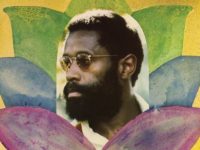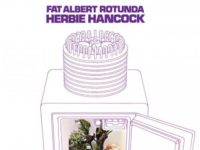Recently I issued Part Two of list of five pretty good fusion jazz records from the underrated 1980s. Since this came a full two and a half years after Part One, maybe it’s time to pull out that first installment from the archives.
Fusion didn’t die when Miles retired, Chick Corea disbanded the classic Al DiMeola lineup of Return To Forever, or Weather Report started treading water. The initial excitement was gone, but a new class of rock-jazz specialists emerged to add a few more wrinkles to the style, and a few of the older guys decided they weren’t quite done yet, either.
As Pat Metheny loomed large on Part Two, another one of the most important fusion jazz guitarists of the last thirty years leaves a large footprint on the original five. John Scofield had attained the legend status he enjoys today largely from the standout job he did as a sideman to Miles Davis and also really coming into his own as a solo artist, both of which happened during the Reagan Administration. Thusly, three of these selections are a recognition of those career-defining achievements.
The remaining two choices fall outside the Scofield theme, but are some terrific sleeper records, one by someone we all know and one by an important behind-the-scenes player in the 80s and 90s. I still reach for these albums today from time to time, so I suppose they’ve stood the test of time alright.
If there is a unifying factor among all five records, that would be that they have all struck the right balance between chops and solid, dynamic material that applies those chops for the greater good of the music. After all, there are plenty records from this decade that feature incredible musicianship; the best, most enduring recordings came from the guys who are the complete package as musicians.
So, here are the first five of the records I choose to advance the argument that fusion continued to evolve and grow after the initial burst during its classic period. It’s by no means complete, but we’ve got to start somewhere. It’s hard to go wrong by starting with Mr. Scofield…
Miles Davis Star People (1983)
With such a large discography stretching over forty-five years, there’s bound to be some really good Miles Davis records that tend to get overlooked. This one came late in Davis’ career, a period that was uneven and lacking the game-changing classics of Kind OF Blue or Bitches Brew. Star People, though, was distinguished by several things: it was the last Miles record produced by Teo Macero, an monumentally fruitful association that went beck to the mid-fifties. Secondly, Miles had by this time found his pre-retirement chops, playing with noticeably more command and control than on his prior two comeback records Man With The Horn and We Want Miles. Thirdly, this record features both Scofield and Mike Stern, two of the guys who are at the top of the heap today among fusion jazz guitarists, and on this date their playing merits the lofty status these two would soon attain.
The centerpiece track is the twenty-minute title track, a no-frills simmering slow blues that Miles breaks up with synth blurts, an odd maneuver that I find strangely attractive. Maybe it was his way of bluntly colliding “old” music with “new,” which is also a portrait of the man’s overall career. Whatever it was, the parade of solos by Sco, Stern, Miles and saxophonist Bill Evans commands attention that no other twenty minute blues song would. Elsewhere, the record is sonically similar to the two “comeback” records that preceded it, but the songwriting has tightened up and songs like “Come Get It” and “U ‘N I” actually have memorable, catchy riffs, if not fully-formed melodies. I don’t know for sure if this was recorded live in the studio, but it feels that way, and the jam vibe of the record by a band full of outstanding musicians stands defiantly against the prevailing trends in rock-jazz of the time. Miles himself would eventually succumb to those trends in a couple of years, but for a brief time in the last decade of his life, he both found his legs and was doing his own thing. Star People is not by any means one of his watershed records, but it offers enough proof that once he shook off the rust, Miles Davis was still the fusion king.
John Scofield Still Warm (1986)
A couple years after Star People was recorded, John Scofield left Miles’ band to restart his solo career. He would soon assemble a working band that would help shape his funk/rock/jazz brand, but for his first post-Miles record, Scofield enlisted the help of some primo studio musicians: ex-Weather Report drummer Omar Hakim, fellow Miles Davis bandmate and bassist Darryl Jones (who eventually replaced Bill Wyman in the Rolling Stones), and keyboardist Don Grolnick. Old colleague Steve Swallow produced this set.
Sco’ made great use of the talent around him; Hakim’s work alone makes this record (see Youtube of the opening track “Techno” for the evidence). But it’s also here that the leader firmly establishes a unique songwriting style that builds memorable melodies off of tricky lead guitar lines. There’s a few ’80s markers on this records, but Swallow wisely scaled them back and Grolnick established the pattern with most Scofield records of the keyboardist playing a limited but effective role of providing coloration and serving as a virtual rhythm guitarist. The reverb-heavy production gives this album a personality that stands apart from other Scofield records, which makes it neither better nor worse, just unique. The performances and strong compositions is what Still Warm a standout, and remains one of his best two or three fusion records of his entire catalog.
John Scofield Blue Matter (1987)
Scofield’s mid-eighties one-two punch concluded with the record that catapulted him to fame in fusion and guitar virtuoso circles, Blue Matter. This was also the record that put drummer Dennis Chambers on the map as he and bassist Gary Grainger combined for the funkiest rhythm section to emerge since that of The Meters; their interplay on the title cut is a bass/drums groove for the ages and overall raise the funk quotient up quite a bit. And then there’s “The Nag,” a head-shaking display of fleet fretwork that puts nearly all other guitarists to shame. It’s on this album where the leader proves to be very adept at handling advanced jazz forms while simultaneously keeping it all well in the pocket, paving the way for his later career-enhancing collaborations with Medeski, Martin and Wood and other acid jazzers in the 90’s and 00s. Blue Matter has long been considered the place to start an exploration of John Scofield’s fusion side, and rightfully so.
Herbie Hancock Mr. Hands (1980)
Herbie Hancock established himself as a funk-jazz godfather with 1973’s Headhunters and 1974’s strong follow-up Thrust, but each successive record after those (save for the excursions back into straight ahead jazz) yielded diminishing results. By the time of Feets Don’t Fail Me Now, Hancock had diluted away all the jazz elements in his contemporary music, leaving us with music devoid of imagination, vision and improvisation that set his earlier works well apart from the r’n’b and fusion of its time. Hancock must have felt himself going adrift, as he forcefully righted the ship again at the beginning of the 80s with Mr. Hands. Hands, like Star People, doesn’t represent a milestone in the leader’s rich musical history, rather, it’s more of a summation of some his better crossover tendencies of the prior decade.
Even though Hancock by this time was using a roomful of synthesizers, he’s learned to leverage them well for providing the right textures and use it creatively to take the place of other instruments, like steel drums on “Calypso” or a lead guitar on “4 A.M.,” a summit meeting with Jaco Pastorius, with whom he has played with a lot during this time but sadly, didn’t record with nearly enough. This record is also a curtain call of sorts for the original Head Hunters: the old crew gets back together for restless “Shiftless Shuffle” which could have been a comfortable addition to that 1973 blockbuster. “Just Around The Corner” with an entirely different roster matches the best funk of the Hunters with Freddie Washington’s slayin’ bass line and Hancock’s thoughtful Rhodes solo in the extended bridge section. The best Hancock fusion record of the 80s ain’t Future Shock, folks. It came three years before that, with much less fanfare, and yet has held up much better over the years.
Don Grolnick Hearts And Numbers (1985)
Don Grolnick’s passing in 1996 at the age of forty-eight didn’t create a very visible void in the jazz world, but among those who knew him and his music, it was a huge blow. One of the most underrated composers and arrangers of the last 20-30 years, Grolnick was also a very tasteful pianist and keyboardist, apparent even in a minor supporting role on a session job like the aforementioned Still Warm. Grolnick’s own oeuvre is mainly represented by two Blue Note records he made in the 90s that showed off his acumen as a George Russell-type leader of sessions playing his originals of unpredictable, quirky but ultimately satisfying brand of advanced modern jazz. Before these career-defining discs, he quietly released a fusion-ish record in the mid-80s that put his longtime associate Michael Brecker in a starring role, an album he christened Hearts And Numbers.
Besides Brecker, other top-draw musicians such as Peter Erskine, Will Lee, Marcus Miller and Hiram Bullock make meaningful contributions. Since Brecker used Grolnick extensively as both a sideman and composer on his own albums until the latter died, Hearts is in many ways a Brecker solo record, two years before his own official debut album came out. Though Brecker’s sax is a huge plus on this album, Grolnick’s accessible but intricate songs—and the way he is able to present them credibly in a contemporary setting through a variety of moods—is the main appeal of this album. His use of synths were uncharacteristically light and tasteful of the period. Songs range from the reggae-tinged “Pointing At The Moon” to the slow funk-rock of “Act Natural.” The ending title track, with Grolnick alone on piano and background synths, is perhaps the crown jewel of this collection of gems. A short, two-part suite, Grolnick spins an absolutely gorgeous melody in the space of three minutes.
The video above documents a more straight ahead rendition of “The Four Sleepers,” where the synth and some bass parts on Hearts are performed by an all-word sax quartet consisting of Brecker, Bill Evans, Ernie Watts and Stanley Turrentine. It might not be terribly representative of this record, but it does provide a good demonstration of Grolnick’s composing and arranger acumen. And just some damned fine saxophone blowing by all four:
- Claudio Scolari Project – ‘Opera 8’ (2024) - April 25, 2024
- Nick Millevoi – ‘Moon Pulses’ (2024) - April 23, 2024
- Cannonball Adderley – ‘Poppin’ in Paris: Live at L’Olympia 1972′ (2024) - April 20, 2024




